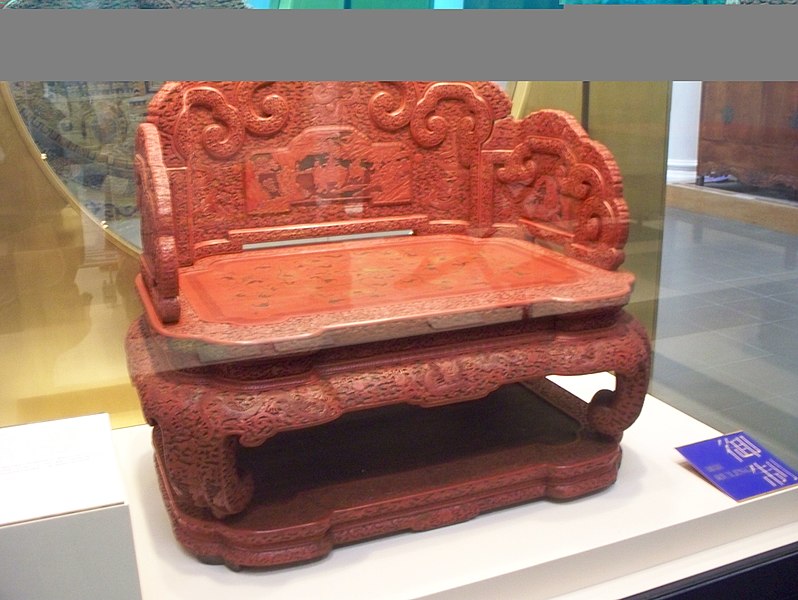File:WLA vanda Chinese Imperial Throne Qing dynasty Qianlong reign.jpg

Original file (2,832 × 2,128 pixels, file size: 839 KB, MIME type: image/jpeg)
Captions
Captions
| DescriptionWLA vanda Chinese Imperial Throne Qing dynasty Qianlong reign.jpg |
Cat.105. Wikipedia Loves Art at the Victoria and Albert Museum This photo of item # 399-1922 at the Victoria and Albert Museum was contributed under the team name "Opal_Art_Seekers_4" as part of the Wikipedia Loves Art project in February 2009. |
||
| Date | Taken in February 2009 | ||
| Source | Uploaded from the Wikipedia Loves Art photo pool on Flickr | ||
| Author | Wikipedia Loves Art participant "Opal_Art_Seekers_4" | ||
| Permission (Reusing this file) |
This file is licensed under the Creative Commons Attribution 2.5 Generic license.
|
File history
Click on a date/time to view the file as it appeared at that time.
| Date/Time | Thumbnail | Dimensions | User | Comment | |
|---|---|---|---|---|---|
| current | 23:47, 13 November 2009 |  | 2,832 × 2,128 (839 KB) | File Upload Bot (Kaldari) (talk | contribs) | {{subst:WLA/temp|desc={{WLA|org=vanda|id=399-1922|ref=|team=Opal_Art_Seekers_4|username=Forever Wiser|userid=24539240@N02|flickr=3272043418|com=Cat.105. <br /> Chinese. <br /> Imperial Throne. <br /> Qing dynasty, Qianlong reign, 1736–95. <br /> Carved |
You cannot overwrite this file.
File usage on Commons
There are no pages that use this file.
File usage on other wikis
The following other wikis use this file:
- Usage on uk.wikipedia.org
Metadata
This file contains additional information such as Exif metadata which may have been added by the digital camera, scanner, or software program used to create or digitize it. If the file has been modified from its original state, some details such as the timestamp may not fully reflect those of the original file. The timestamp is only as accurate as the clock in the camera, and it may be completely wrong.
| Camera manufacturer | EASTMAN KODAK COMPANY |
|---|---|
| Camera model | KODAK Z1285 ZOOM DIGITAL CAMERA |
| Exposure time | 1/2 sec (0.5) |
| F-number | f/2.8 |
| ISO speed rating | 400 |
| Date and time of data generation | 13:40, 9 February 2009 |
| Lens focal length | 7.54 mm |
| Orientation | Normal |
| Horizontal resolution | 480 dpi |
| Vertical resolution | 480 dpi |
| Y and C positioning | Centered |
| Exposure Program | Normal program |
| Exif version | 2.21 |
| Date and time of digitizing | 13:40, 9 February 2009 |
| APEX shutter speed | 1 |
| APEX aperture | 3 |
| APEX exposure bias | 0 |
| Maximum land aperture | 3 APEX (f/2.83) |
| Metering mode | Pattern |
| Light source | Unknown |
| Flash | Flash did not fire, compulsory flash suppression |
| Color space | sRGB |
| Exposure index | 400 |
| Sensing method | One-chip color area sensor |
| Custom image processing | Normal process |
| Exposure mode | Auto exposure |
| White balance | Auto white balance |
| Digital zoom ratio | 0 |
| Focal length in 35 mm film | 36 mm |
| Scene capture type | Standard |
| Contrast | Normal |
| Saturation | Normal |
| Sharpness | Normal |
| Subject distance range | Unknown |